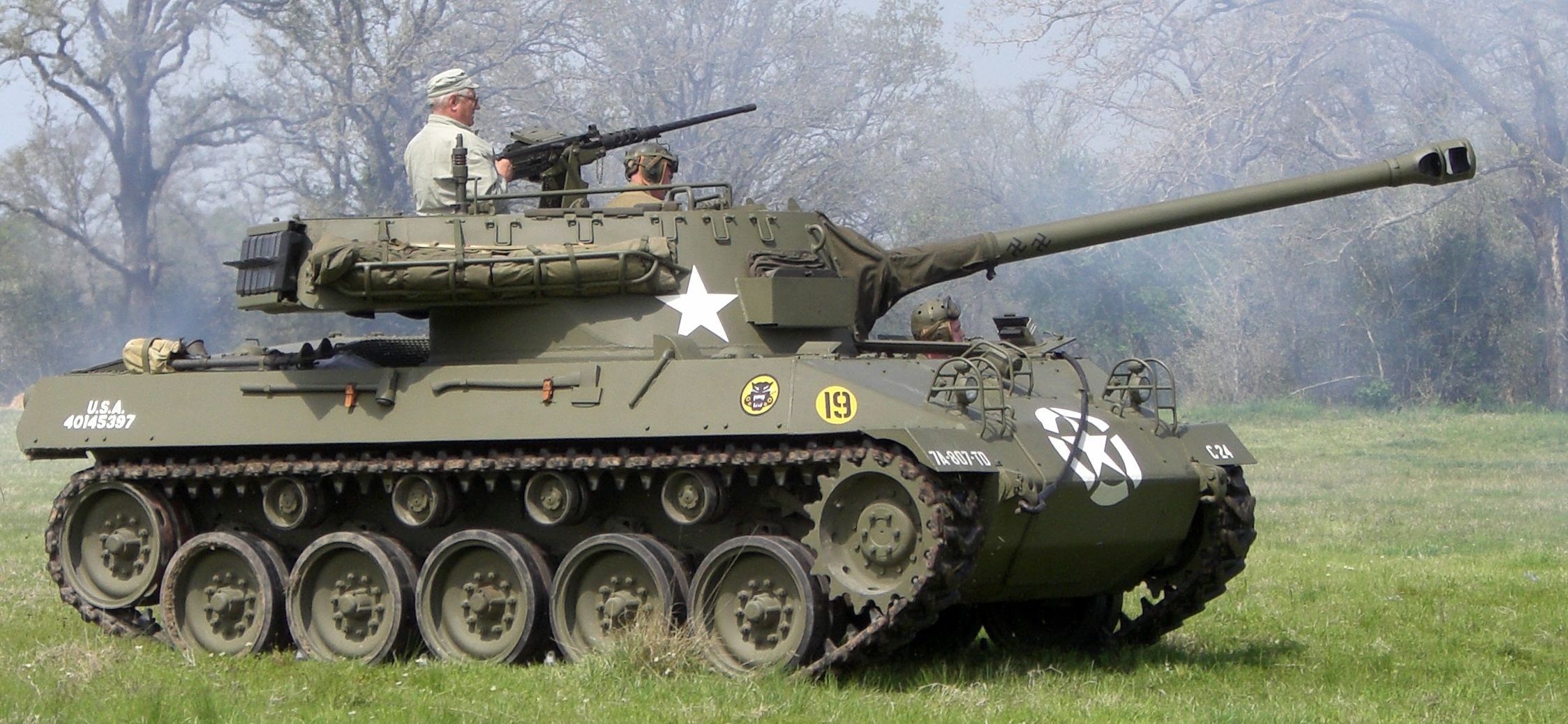M18 (Tank destroyer)
Enlarge text Shrink text- Work cat.: Zaloga, S.J. M18 Hellcat tank destroyer 1943-97, 2004:p. 3 (the M18 76mm gun motor carriage (GMC); the M18) p. 4 of cover (developed for the US Army's Tank Destroyer Command)
- Wikipedia via WWW, Mar. 14, 2004(M18 Hellcat: the Gun Motor Carriage M18 was an American tank destroyer of World War II; the M18; often given the nickname Hellcat)
The M18 Hellcat (officially designated the 76 mm Gun Motor Carriage M18 or M18 GMC) is a tank destroyer used by the United States Army in World War II and the Korean War. Despite being equipped with the same main gun as some variants of the much larger Sherman tank, the M18 attained a much higher top speed of up to 55 mph (89 km/h) by keeping armor to a minimum, and using the innovative Torqmatic automatic transmission. The M18 Hellcat was the culmination of the development of various prototypes of fast tank destroyers dating back to 1941. Entering production in summer 1943, the M18 first saw combat service in spring 1944. The M18 served primarily in Western Europe, but was also present in smaller numbers in Italy and the Pacific. Production continued until October 1944, with 2,507 built. This tank was the most effective U.S. tank destroyer of World War II. It had a higher kill-to-loss ratio than any other tank or tank destroyer fielded by U.S. forces in World War II. Kills claimed were 526 in total: 498 in Europe, 17 in Italy, and 11 in the Pacific. The kills-to-losses ratio for Europe was 2.3 to 1, and the overall kill to loss ratio was 2.4 to 1. M18s were "...not primarily used for tank fighting, but were committed more often to improvised roles, usually direct fire support for infantry." Although the M18 was retired from U.S. service immediately after the end of World War II, a variant, the M39 armored utility vehicle, served in the Korean War, and M18s continued in service with some countries until 1995. The M18 Hellcat was an example of the balancing act among firepower, armor, and mobility in armored fighting vehicle design. Despite its excellent mobility and reasonably powerful main gun, the M18 Hellcat also had drawbacks, including thin armor and a poor high explosive shell for its main gun. Historian Steven J. Zaloga characterized the overall design of the M18 as "poorly balanced" and stated that "the Hellcat's combat record is attributable to the training and dedication of its crews, not to its ill-conceived design."
Read more on Wikipedia >
 Topic
Topic







